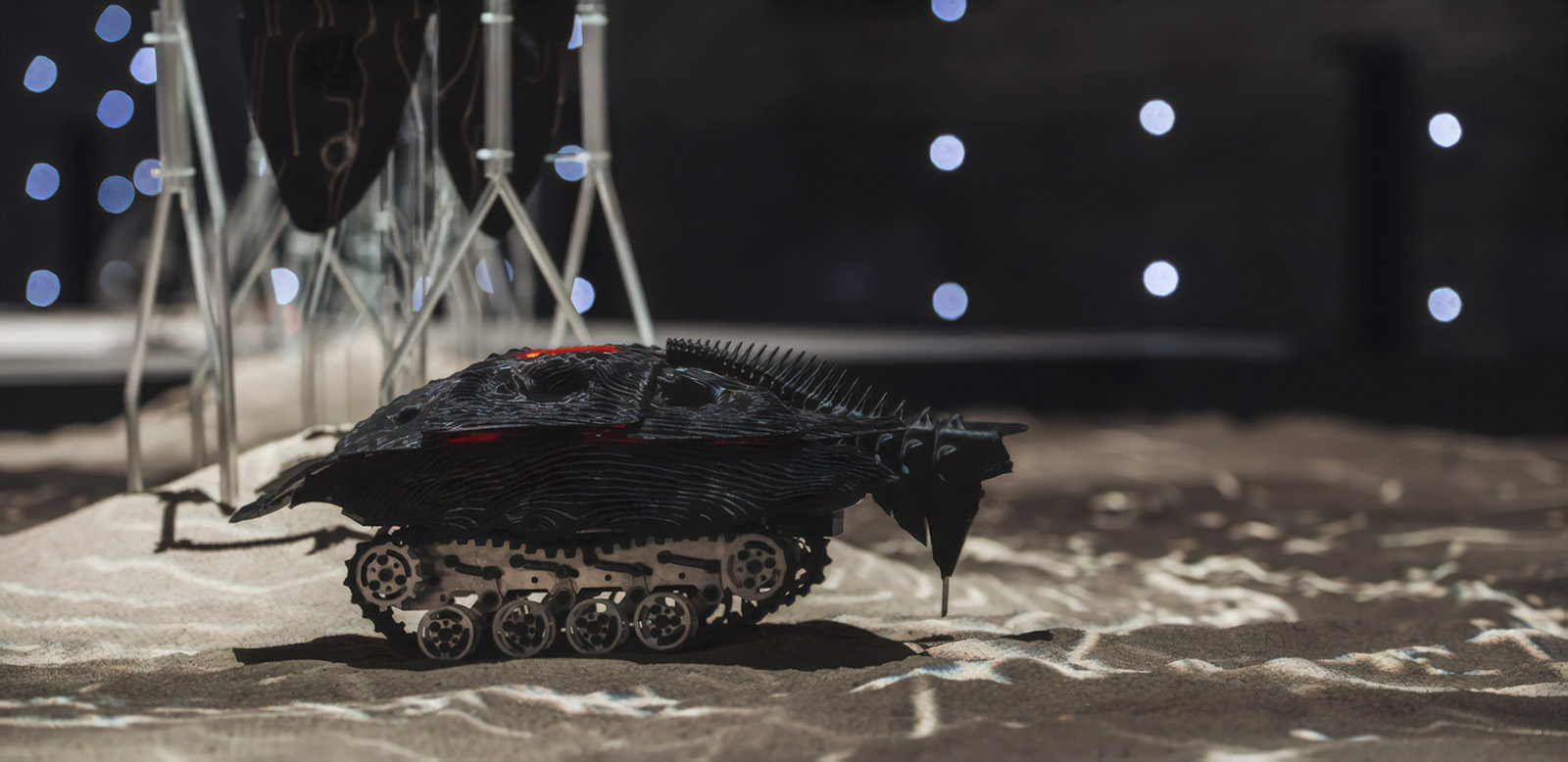‘Robotic Habitats’ imagines a self-sustaining AI ecosystem


As artificial intelligence advances at an unprecedented pace, we tend to see its arrival in emotional terms -- usually, either excitement or fear. But Noumena, a collective of designers, engineers and architects, is looking at AI and robots more practically. What form will they take, how will they survive and develop, and where will they live? It aims to explore those idea with an exhibition entitled "Robotic Habitats."
Noumena's project assumes that deep learning systems will grow out of their narrow Go-playing abilities and soon match humans at many, if not most, tasks. While that would put them on par with us, it doesn't mean they would live the same way, though. "Society will need to develop a framework for both to thrive," explains Neumena on its website. "A new form of artificial life will emerge, finding space at the peripheries of humanity in order to not compete for human-dominated resources."
In order to imagine what this AI society might be like, Noumena first needed to design the robots themselves, so they created rovers that are part biologic and part artificial. They have DC motors, an Arduino main board, and Kinect motion sensors to guide their movements. On the "nose" is a peristaltic pump that can inject material stored in a central "spine" into the sandy landscape.
The external, 3D-printed tortoise-like skin has a slightly creepy Alien vibe, but there's a reason for the grooves. They harbor mycelium, a fungus material made up of bacteria colonies that will allow the robots to "grow." It also feeds energy to the motors, gears and electronics that are embedded in the bots' frames.
The robots can then head out into the 16 x 16 foot sandy terrain, based on a 3D map created from the Kinect sensor from previous excursions, and inject mycelium into the environment. That forms a network of lines consisting of bacteria and aggregating material, creating a bizarre landscape that is artificial and biological at once. It's then collected by central, pod-like columns, which use the materials to fabricate new rovers, making the whole thing self-sustaining.
The installation is meant to be thought-provoking, showing that machines may not live in a gleaming Matrix-like world, but rather "a natural landscape robotically manipulated," Noumena explains. At the same time, similar technology might be necessary for machines that go to Mars and other worlds, paving the way for humans to arrive.
Noumena figures that this robot society would "trigger the need for robots to evolve into different species, each performing specific tasks." That in turn will create an even more advanced infrastructure, that guarantees the whole thing will continue. The final result? "A new robotic habitat shaped by autonomous species driven by hidden, inaccessible forces."
Source: Noumena, Design Boom
via Engadget RSS Feed "http://ift.tt/2DMoghR"
Comments
Post a Comment